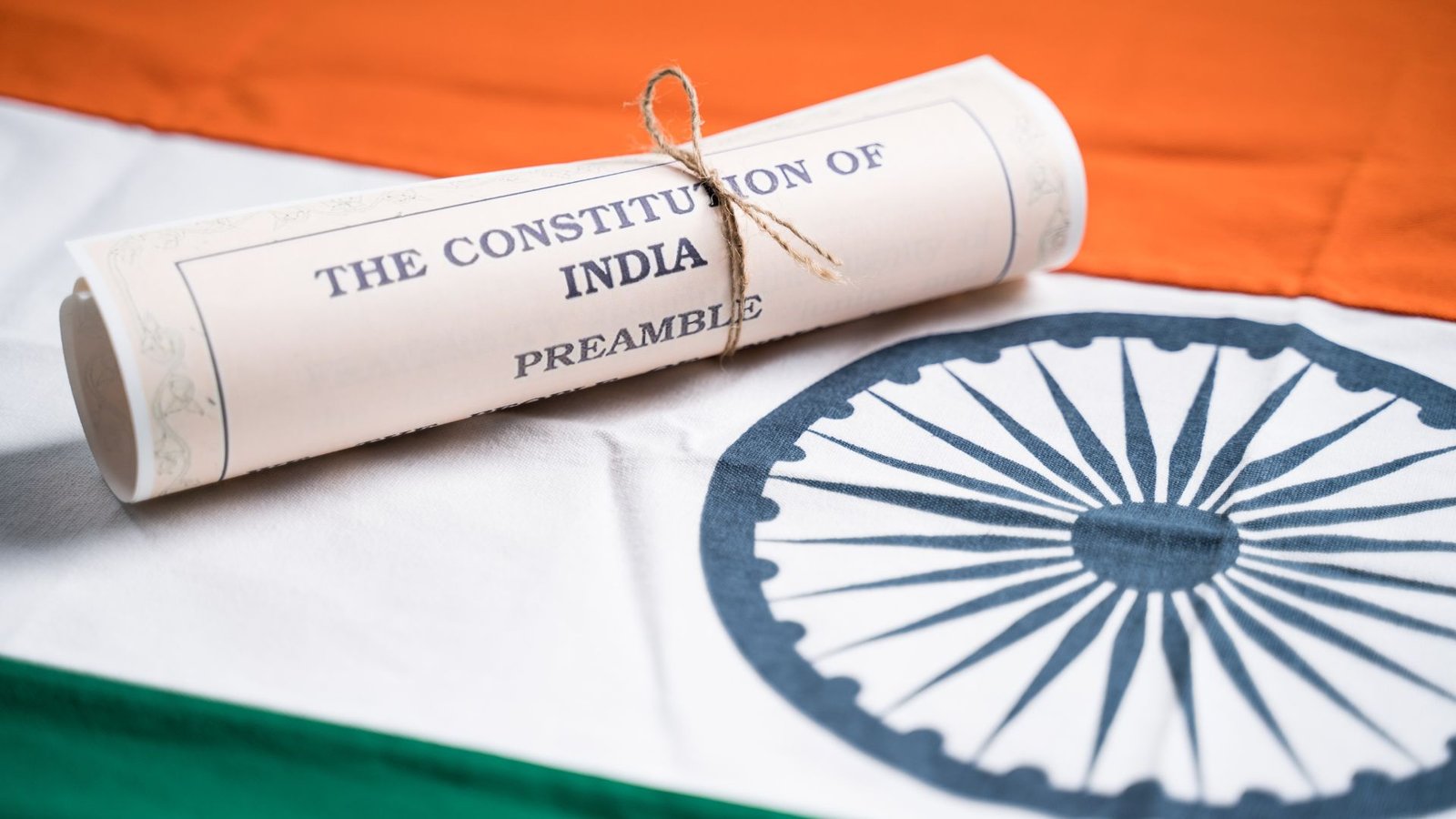On this page you will read detailed information about Concept of Repugnancy Under Article 254.
When interpreting the Constitution, you must comprehend the concept of repugnancy under Article 254. This article stipulates that in a conflict between union and state laws on subjects in the Concurrent List, the union law prevails if repugnant to the state law. In assessing repugnancy, you should analyze the legal tests established through judicial precedent. As laws evolve, new questions emerge on defining repugnancy. By studying this concept, you gain insight into interpreting the Constitution on areas of potential union-state conflict. This understanding equips you to apply Article 254 in advising on or enacting legislation.
What Is Article 254 of the Indian Constitution?
Article 254 of the Indian Constitution deals with inconsistencies between laws made by Parliament and state legislatures. It specifies that if there is any inconsistency between a central law and a state law on a matter in the Concurrent List, then the central law shall prevail. However, there are a few exceptions to this general rule:
- If the state law was made with the President’s assent, then the state law will prevail in that state.
- If the central law was made before the state law, and the state law received the President’s assent, then the state law will prevail in that state.
- If the state law was made to implement a directive given by the Parliament to the state legislature, then the state law shall prevail.
The rationale behind Article 254 is to uphold the supremacy of Parliament in matters on which it has the power to make laws. At the same time, it safeguards the legislative powers of the state legislatures in certain situations. It promotes harmony between laws made by Parliament and state legislatures on matters in the Concurrent List and avoids any conflict between them.
In case of an inconsistency between central and state laws, the courts have to determine whether or not the conflict falls within the scope of Article 254. If it does, the general rule of supremacy of Parliament is applied. The courts can also harmoniously interpret the inconsistent laws to avoid any conflict. As a last resort, the courts may strike down the state law as being unconstitutional.
Article 254 helps in maintaining a balance between the federal and unitary features of the Constitution. It upholds the supremacy of Parliament on matters in the Concurrent List but also gives limited primacy to state legislatures in certain circumstances. Overall, it promotes cooperative federalism and unity despite the distribution of legislative powers between Parliament and state legislatures.
Understanding the Concept of Repugnancy
To understand the concept of repugnancy under Article 254 of the Constitution, it is important to first comprehend the hierarchy of laws in India. The Constitution is the supreme law of the land. Any law made by the Parliament or a State Legislature should be in conformity with the provisions of the Constitution.
In case of any inconsistency between the constitutional provisions and the ordinary laws, the former shall prevail and the latter shall be void to the extent of repugnancy. This is enshrined in Article 254 of the Constitution which lays down that in case of repugnancy between a Union and a State law relating to a matter enumerated in the Concurrent List, the law made by the Parliament shall prevail and the law made by the State Legislature shall be void to the extent of repugnancy.
For a law to be repugnant to another law, there must be direct conflict between the two laws. Mere difference or variation in the language or scope of the two laws may not necessarily lead to repugnancy. There must be irreconcilability so that compliance with one law would involve breach of the other law. Repugnancy arises when two laws occupy the same field and there are inconsistencies covering the same subject matter.
It is pertinent to note that repugnancy may arise between the provisions of two statutes, between a statute and a rule or regulation, or between two rules or regulations. However, for repugnancy to exist, the following conditions must be fulfilled:
- The two laws must have been made by competent authorities.
- They must relate to the same subject matter.
- There must be direct conflict between the provisions of the two laws so that both cannot stand together.
- The conflict must have arisen on a provision of law on which the authority of the legislature or rule/regulation making body is competent to legislate.
If the above conditions are satisfied, the law made by the competent authority shall prevail and the other law shall be void to the extent of repugnancy under Article 254. The repugnant law becomes unenforceable and inoperative, and the other law alone governs the subject matter.
In the previous post, we had shared information about An Overview of India’s Biological Diversity Act 2002, so read that post also.
When Does a State Law Become Void Due to Repugnancy?
According to Article 254 of the Indian Constitution, if there is a direct conflict between a central law and a state law on the same subject matter, the central law shall prevail and the state law shall become void to the extent of the repugnancy. However, the state law will not become void automatically. The doctrine of repugnancy will apply only when both the laws cannot co-exist.
There are two situations when a state law can become void due to repugnancy:
Same field legislation
If the Parliament and the state legislature have enacted laws in the same field and the two laws contain contradictory provisions, the state law will become void. For example, if there are differences in punishment or procedure prescribed under the central law and the state law for the same offence, the state law will become inoperative.
Direct and inevitable conflict
If there is a direct and inevitable conflict between the provisions of the central law and the state law, the state law will become void. The conflict must be absolutely irreconcilable. Mere possibility of conflict is not enough. For example, if the central law prohibits something while the state law permits the same thing, it will lead to direct and inevitable conflict, making the state law void.
However, if the field is not occupied fully by the Parliament and the state legislature can make supplemental provisions, or if the state law deals with certain aspects of the matter while the central law deals with certain other aspects, both laws can co-exist. The state law does not become void automatically due to enactment of a central law on the same subject. The repugnancy must be established as an actual fact.
The doctrine of repugnancy under Article 254 aims to resolve the conflicts between the union and the states and establishes the supremacy of the Parliament to maintain uniformity in laws across the country. By understanding the scope and extent of repugnancy, we can determine when a state law will become inoperative due to a central law on the same subject matter.
Judicial Interpretation of Repugnancy Under Article 254
The judiciary has interpreted Article 254 of the Constitution in several cases. The courts have held that a law will be deemed repugnant to the Constitution only if there is a direct conflict between the two, to the extent that obeying one necessarily implies disobeying the other.
Mere differences or variations in the subject matter or provisions of the two laws do not necessarily imply repugnancy. For repugnancy to exist, both the laws should operate in the same field and must contain inconsistent and irreconcilable provisions so that they cannot stand together or operate in the same area. If the provisions of both laws can be obeyed without disobeying the other, there is no repugnancy.
The test of two statutes being repugnant to each other is whether the two can stand together. If the provisions of a law passed by the State legislature and those of a law passed by Parliament cannot be reconciled, then the State law shall be void to the extent of the repugnancy. Such repugnancy must exist in fact, and not depend upon a possibility.
There may be cases where the provisions of a State law and a Union law may conflict initially but may be capable of reconciliation. In such cases, the doctrine of pith and substance is applied. The courts examine the true nature and substance of the legislation to determine whether the enactment in question falls within the competence of the legislature which passed it.
The courts also apply the principle of harmonious construction where two statutes can be interpreted in a harmonious manner without creating any conflict or repugnancy. The courts adopt an interpretation which makes the provisions of both the laws operative rather than invalidating one. The dominant purpose and object of both the legislations are considered while adopting such harmonious construction.
In conclusion, the judiciary has held that repugnancy under Article 254 arises only if there is an irreconcilable conflict between a law made by Parliament and a law made by the State Legislature with respect to the same subject matter. Mere possibility of conflict is not sufficient. The test is whether the two provisions can be obeyed simultaneously. If so, there is no repugnancy.
FAQs on Article 254 and Repugnancy
The concept of repugnancy is an important principle in the interpretation of statutes and constitutional provisions under Article 254 of the Indian Constitution. It refers to a situation where there are two or more laws made by the Parliament and the State Legislatures on the same subject and there is a conflict between those laws. In such a case, Article 254 provides that the law made by the Parliament shall prevail over the law made by the State Legislature. However, there are certain exceptions to this general rule:
- If the law made by the State Legislature has been reserved for the consideration of the President and has received his assent, then the State law shall prevail in that State.
- If the law made by the Parliament is earlier in time, the State law shall be void only to the extent of its inconsistency with the Parliamentary law. The remaining part of the State law shall remain operative.
- If the law made by the Parliament is later in time, the State law shall become void from the date the Parliamentary law comes into force.
Some frequently asked questions on Article 254 and the concept of repugnancy are:
Repugnancy refers to a conflict or inconsistency between two or more laws on the same subject matter. When two laws made by the Parliament and State Legislatures deal with the same subject and there is a conflict between their provisions, there is said to be repugnancy between them.
As a general rule, the law made by the Parliament shall prevail over the law made by the State Legislature. This is based on the principle that the Parliament has overriding powers to make laws on any subject listed in the Union List or Concurrent List.
Yes, there are three exceptions:
(i) If the State law has been reserved for the President’s assent and has received such assent;
(ii) If the Central law is earlier in time, the State law will be void only to the extent of repugnancy.
(iii) If the Central law is later in time, the State law will be void from the date the Central law comes into force.
The rationale behind Article 254 is to ensure harmony between the laws made by the Parliament and the State Legislatures and to prevent any conflict between them. It establishes the supremacy of the Parliament to make laws on subjects enumerated in the Union List or Concurrent List.
Conclusion
In summary, the concept of repugnancy under Article 254 of the Indian Constitution is complex, yet critical to the balance of power between the Union and state legislatures. As citizens seeking to comprehend the nuances of lawmaking, we must strive to grasp the guidelines the framers set forth regarding when state laws can supersede national legislation. Through reasoned analysis of relevant case law and Constitutional principles, we can further elucidate this idea of repugnancy and how it shapes policymaking. Moving forward, we must remain engaged with judicial rulings on this topic as the courts are the ultimate arbiter of what constitutes a repugnant law under our Constitution. An informed public is essential for preserving the federal structure.
Disclaimer
The information and services on this website are not intended to and shall not be used as legal advice. You should consult a Legal Professional for any legal or solicited advice. While we have good faith and our own independent research to every information listed on the website and do our best to ensure that the data provided is accurate. However, we do not guarantee the information provided is accurate and make no representation or warranty of any kind, express or implied, regarding the accuracy, adequacy, validity, reliability, availability, or completeness of any information on the Site. UNDER NO CIRCUMSTANCES SHALL WE HAVE ANY LIABILITY TO YOU FOR ANY LOSS OR DAMAGE OF ANY KIND INCURRED AS A RESULT OR RELIANCE ON ANY INFORMATION PROVIDED ON THE SITE. YOUR USE OF THE SITE AND YOUR RELIANCE ON ANY INFORMATION ON THE SITE IS SOLELY AT YOUR OWN RISK. Comments on this website are the sole responsibility of their writers so the accuracy, completeness, veracity, honesty, factuality and politeness of comments are not guaranteed.
So friends, today we talked about Concept of Repugnancy Under Article 254, hope you liked our post.
If you liked the information about Concept of Repugnancy Under Article 254, then definitely share this article with your friends.
Knowing about laws can make you feel super smart ! If you find value in the content you may consider joining our not for profit Legal Community ! You can ask unlimited questions on WhatsApp and get answers. You can DM or send your name & number to 8208309918 on WhatsApp











